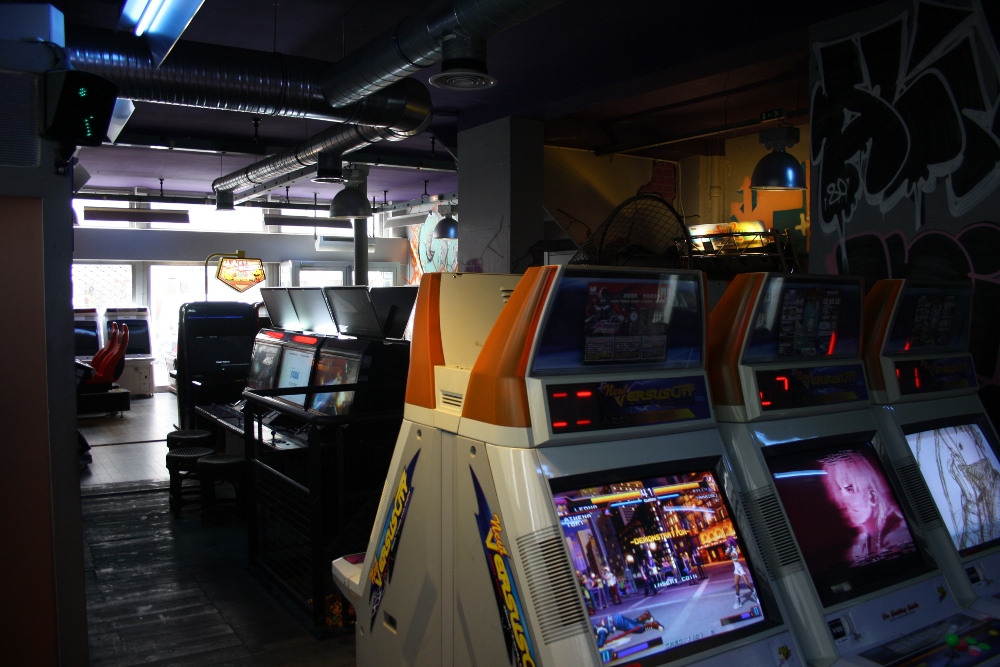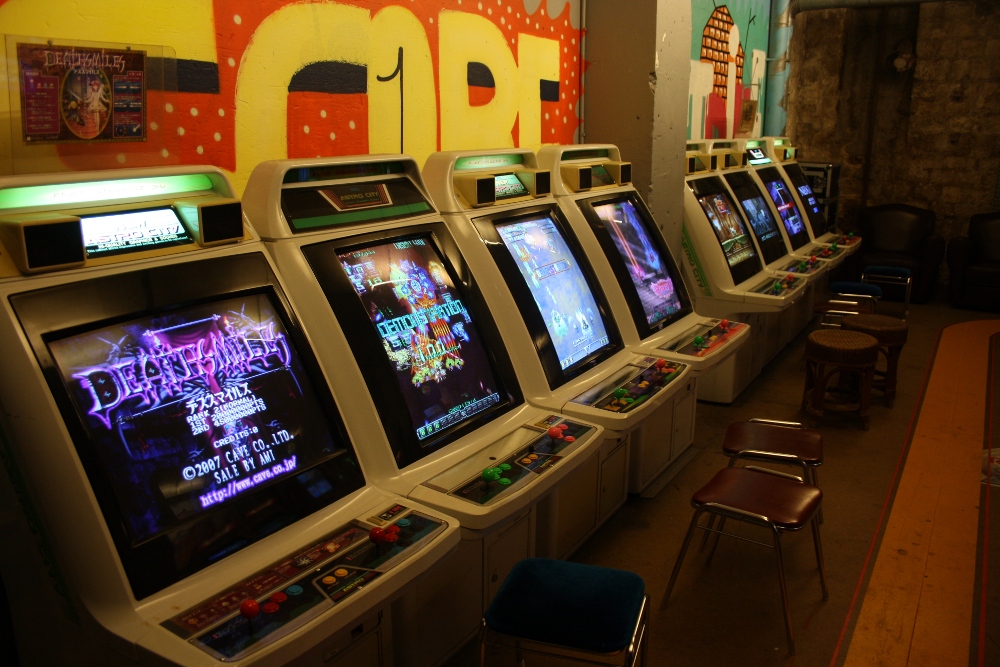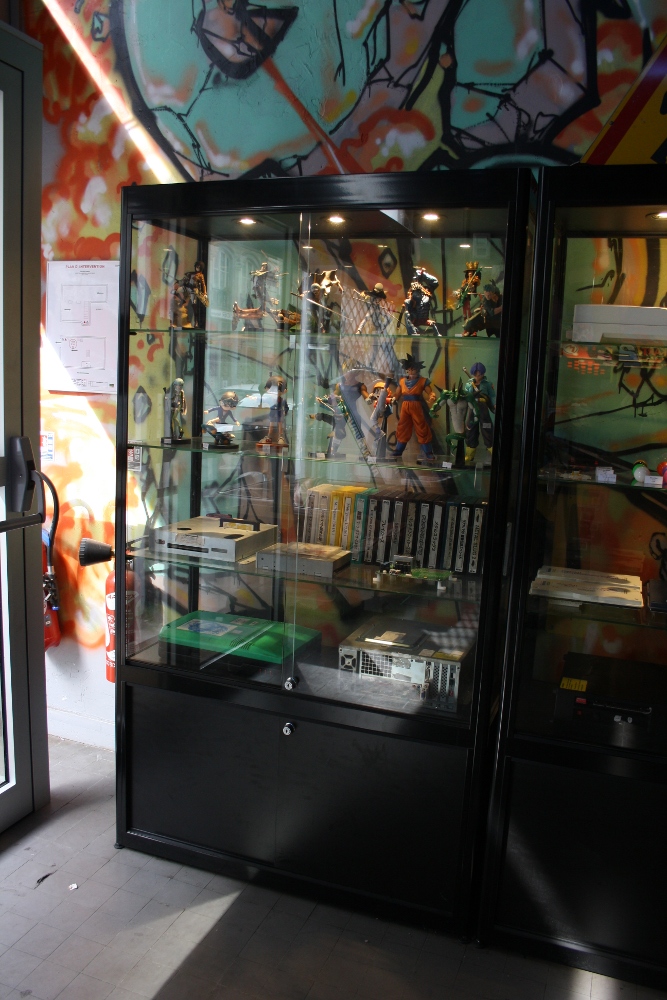
Welcome to Paris, friend. Let me introduce you to what is perhaps the best arcade in all of continental Europe. It lies in a small side street right next to the “Place de la Nation”, near the eastern border of Paris, hidden between a couple of run-down 19th century buildings. If you don’t know it’s there, you’d almost certainly pass on by without noticing it. But you would miss oh so much.
This, my friend, is ArcadeStreet Paris.
The Arcade
Come to think of it, Paris might not be the right place for this arcade. In a town that is so much defined by its aesthetics, ArcadeStreet, which, at its core, is little more than two floors stacked to the brim with arcade machines, feels like a very “run-down” place compared to literally any other public building you could enter within a 2 kilometer radius. It’s not that the arcade interior itself looks bad, but rather very very improvised and plastered together. Some of the interior walls are nicely refurbished and plastered with different colors, others have artsy graffity on them, and yet others are just completely blank, exposing the bare red brick wall underneath. There’s couches, stools, and bins strewn across the place with no clear arrangement, and it feels very much like the basement of a rich 80’s kid who regularly invites his friends over to play arcade games. Except it’s not the 80’s anymore, the “rich kid” is a gaming enthusiast in his late 30s, and everyone is invited, not just friends.

Maybe it sounds a bit weird, but that “everyone is invited” part is probably one of the core components of ArcadeStreet. Despite (or maybe because of) the slightly shoddy interior, you immediately feel “at home” with this arcade. It’s perfect to go to with friends, since it has an abundance of cabinets, many of which are linked with each other – something the fighting community in particular just absolutely loves. There’s a few more things that seperates ArcadeStreet from all other European arcades I’ve ever been to (even Astro City Southend):
1) You’re not required to play anything during your stay there. If you just want to make ArcadeStreet your regular meetup place with friends after school or university, you’re absolutely free to.
2) This is a 100% pure arcade. There are no pool tables, no gambling machines, no redemption games, and no bar arrangement for drinks and snacks (only a vending machine in the back), meaning it sustains itself solely on the games and the community.
3) The owner of this arcade lives videogames. There’s just no other way to put it. When I was there during most of the day, more often than not I’d see him not behind the counter, but rather out and about playing against others on the fighting game machines – and damn, he’s good!
The Community
As was already mentioned, the regular community at ArcadeStreet is mostly composed of fighting game players, who are probably 90% responsible for keeping the arcade afloat. Even during 2-4PM on weekdays, there’s always going to be at least 3 or 4 people on the fighting game machines, often playing against one another. As I learned from the owner, the arcade basically started out as an idea between a small group of fighting game players and then turned into a reality in 2011. Ever since then, it’s been primarily associated with games like Street Fighter, Tekken and King of Fighters, although that’s not the only genre with a playerbase at ArcadeStreet.
Owing largely to the owner’s personal interest in japanese arcade gaming, ArcadeStreet has amassed a sizeable collection of non-fighting games as well. The largest of these smaller groups are undoubtedly the vertical shooters, most of which are stored on the lower floor (the “basement”). More often than not, I had to wait in a coin line for a try at Ketsui, Dodonpachi, Mushihime-sama and others. Also more often than not, I was the worst player in the entire line – one time, we got to watch someone who got to the Final boss of Mushihime-sama Ultra Mode within one credit (to anyone who’s curious, THIS is what that boss looks like). That was probably the most hype time I’ve ever had in an arcade (he died 20 seconds into the fight, however).
And then, of course, there’s the rhythm games. Sadly, despite currently being the only location in Europe that has 4 out of the 7 games in the Bemani lineup in one place, the rhythm gaming community at ArcadeStreet is very small. There’s Sengan (9th dan), who’s probably the best IIDX player in Paris, skmrs who plays 10s on DP, neomiii who rocks 10s on Jubeat, and a handful of regular DDR and pop’n players. That said, even though the rhythm gaming community in Paris may be small, it’s also very approachable and friendly. Another major plus point that I didn’t even think about before going there is the fact that ArcadeStreet is… well, in Paris.
And the japanese LOVE going to Paris.
During my brief stay (3 days) at and around the Place de la Nation, I met a total of 4 (!) japanese players who came into ArcadeStreet to play the various Bemani games there. One of them was a particularly friendly guy in his early 20s who’d come to Paris with his family and had heard of the IIDX cabinet nearby. We played a few rounds of 9s and 10s together (he was 8th dan) and later exchanged emails and twitter accounts. Easily the best day I’ve had in Paris so far (and the first time I got to play IIDX with a japanese person!).

The Games
ArcadeStreet sports a large selection of easily over 50 arcade machines. I haven’t counted them hand by hand, but I’m fairly certain they have a few more machines than Astro City does, if only because they don’t have any gambling machines whatsoever. There’s the usual suspects like DDR, Street Fighter, Metal Slug and Espgaluda, but also some games that are much harder to find anywhere, such as the japanese-only Mario Kart GP2 or gigantic Darius Burst EX. Among these imported games is also the classic Taiko no Tatsujin, which I got to play on the actual arcade for the first time in my life (and let me tell you, it’s as exhausting as you probably think it is). Another game I got to play for the first time was DJMAX Technika 2, which was… interesting, if a bit of a letdown at the end because of its small song library and weird difficulty progression. Nonetheless, I enjoyed being able to play all these rarely seen games at ArcadeStreet – especially considering the current state of arcades in Europe, it’s fascinating that a pure-blooded arcade with obscure games like this can even survive in today’s economy! However they do it, ArcadeStreet pulls it off, and I’m truly, honestly glad that it exists and that I had the chance to visit it.

The other stuff
As I already mentioned, ArcadeStreet is very much focused on the machines themselves. There’s not much else to do there besides playing the games, which makes it a very community-centered place to be – being in there alone for a few hours does tend to get kind of lonely, especially during weekdays. That said, ArcadeStreet isn’t all video games, there are a few more things to check out there. One of them is the small vitrine you can see above. It’s situated right next to the entrance and showcases a bunch of figures, games, and gaming systems from the private collection of the owner. Every now and then, there’s also other stuff in there like japanese charms for New Year or winter decoration for Christmas. If you want to spend money on something that isn’t games, you can also buy drinks and snacks from a vending machine in the back or a shirt with the arcade’s logo on it for 20€. Or you can talk to the owner, who’s around the arcade every day from 2PM to 7PM (he has a lot of interesting stories to tell).
Conclusion
ArcadeStreet Paris spoiled me. It was very much like I’d always imagined those small, privately-run sidestreet arcades in Akihabara, where all the Bemani games were on the last offline-compatible version because the owner couldn’t pay for eAmusement access, but people still visited simply for the community and because the place just has that indescribable atmosphere of something you’re so internally used to that you just don’t want to let it out of your life. It evoked that kind of feeling in me, and even during the times I had noone to play with, I still enjoyed every minute of being at the arcade.
ArcadeStreet isn’t much. It’s not Taito Station or Namco Funscape, or even just Astro City, which at least tries to appear as a serious commercial “Barcade”. It’s simply… as if you’re back in the 80’s, being invited into the basement of that rich kid from your school, and upon entering just have one word cross your mind:
“Wow.”


Leave a Reply